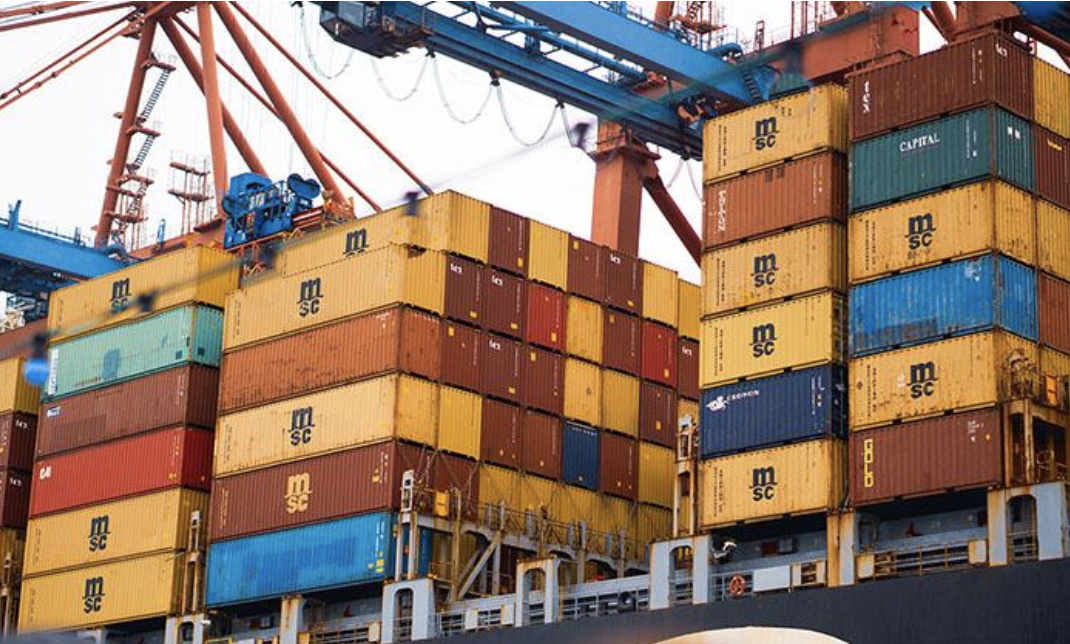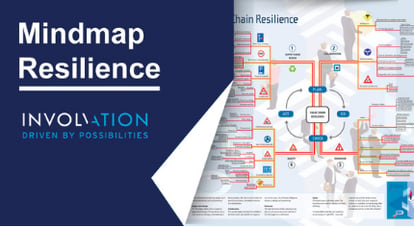Resilience and the role of Integrated Business Planning
Until now, many organisations have relied on a Sales & Operations Execution (S&OE) or Sales & Operations Planning (S&OP) process to optimise their supply chains. However, while these approaches are still very valuable, the levels of resilience that they can offer are not sufficient by themselves. For sustainable resilience, combining S&OE/S&OP with Integrated Business Planning (IBP) helps set businesses up for success.
What can IBP offer that S&OE/S&OP cannot?
S&OE/S&OP is certainly a highly useful tool for enabling businesses to navigate tumultuous circumstances. However, it does leave noticeable gaps in its ability to ensure organisations’ supply chains become truly resilient. IBP addresses these, incorporating:
- Business intelligence
- Business strategy
- Financial decision-making
- Market share
- Service levels
- Ecosystem partnerships
As such, Integrated Business Planning can serve organisations as the natural accompaniment to their S&OE/S&OP frameworks. Expanding an organisation’s overview to encompass its full supply chain, IBP enables integrating true resilience from end to end.
Cultivating resilience mindsets with IBP
The advantages of IBP extend beyond its practical implementations as a tool and methodology within a business.
IBP’s integrated nature necessitates sharing data and insights across business functions, naturally eroding silos that may exist between your internal teams. Likewise, IBP calls for greater involvement of an organisation’s external partners and stakeholders, enhancing communication on those levels.
With IBP creating your organisation’s forum to table these wide-ranging insights, your contingency planning will be significantly elevated. Scenario mapping, business continuity and stress testing approaches can be based on a wider business overview, enhancing their utility.
Key success factors for IBP
✓ Design your process with structure, frequency and preparation in mind: Monthly meetings will likely suffice once your IBP is up and running smoothly. In the introductory phase, more regular meetings are advisable; likewise, when disruption strikes.
✓ Ground your IBP in facts and gathered intelligence: Valuable insights such as assumptions, forecasts, risks and opportunities are required from across your business ecosystem. Key perspectives include:
- Supply Chain
- Production
- Sales/Marketing
- Purchasing
- Finance
- External partners and stakeholders, including suppliers and investors
✓ Define separate frameworks for operational and tactical decision-making: Clarify roles and responsibilities, ensuring that your cross-chain representatives are prepared to enter decision-making mode at each IBP meeting you hold.
✓ Map out scenarios: Uniting representatives from throughout your supply chain, IBP meetings can highlight early warnings from any and all supply chain links.
✓ Approach your IBP as a process of ongoing learning and evolution: IBP lays the crucial groundwork for mapping your long-term business success and safeguarding your bottom line, based on cross-functional decision-making.
In this article you will find more information about the key succes factors for IBP.
How to build resilience in your supply chain
Resilience begins with knowing your supply chain inside out
Let’s take the automotive industry as an example. Here, long, international supply chains mean that an issue with one link rapidly creates problematic repercussions. To mitigate these, or, ideally, to avoid them entirely, detailed understanding of the supply chain ecosystem is key.
This rings true for any business seeking supply chain resilience. Gaining these in-depth insights begins by asking simple, yet powerful, questions:
- How do your suppliers work?
- Where are they operating?
- What are the dynamics and risks at play within your supply ecosystem?
- What is its speed of reaction and adaptability?
Ready for resilience? Deepen your insight with this podcast featuring Jeroen Scheepers, Partner at Involvation, discussing the Resilience Hands-On program. Listen now:
Key strategies for building supply chain resilience
Incorporating resilience into your supply chain is a wide-ranging process, with many interconnected elements. Business leaders are aware that they need to take action, yet defining where to get started is no easy task.
To take your first steps towards generating a supply chain resilience strategy, it is beneficial to focus on four essential elements:
- Supply chain design
- Collaboration
- Behaviour
- Agility
Exploring supply chain design: Independence and interconnections
- What are the characteristics of your supply chain? Local or global?
- Are you clear on business strategy?
- Which interdependencies can you identify in your supply chain?
- Does detailed mapping reveal weaknesses or potential areas for streamlining?
- Map more broadly: Who supplies your suppliers?
- Are there opportunities for complexity reduction and digitalisation?


Exploring collaboration: More resilient together
- How efficiently do your core departments (Sales, Planning, Operations, Purchasing, Marketing, etc.) communicate?
- How effective are communications throughout the external players in your supply chain?
- Are you creating a culture of combined intelligence within your business ecosystem?
- Are you maximising visibility, transparency and information-sharing across your internal employees, external partners and stakeholders?

Exploring agility: Rapid response
- How fast is your organisation able to react to change?
- Can you efficiently adapt in times of crisis?
- Are you positioned to capitalise on opportunities, reacting faster or better than your competition?
- Do you have strategies in place to gain market share and accelerate business success when the chance presents itself?
Explore how these critical factors integrate and co-exist in our supply chain resilience mindmap.
Download the Resilience Mindmap:
Collaboration is key for supply chain resilience
At Involvation, we see collaboration as the primary factor in creating strong foundations for supply chain resilience. Guiding companies to cultivate this mindframe, we focus on various angles:
1. Intelligence: Enhance your insights via data and information
For preparation, knowledge is an invaluable asset. Unable to predict where the next major disruption to your supply chain will emerge from, it is simply vital to gather all the intelligence you can.
Any indications that you can gain from lookouts and early-warners within your business ecosystem (internal employees, partners, investors, and so on) can provide you with valuable time to shape a proactive response. Fascinating digital developments have also enabled integrating external sources (cyber, financial, geopolitical, regulatory, and more) into your strategy.
This enables organisations to take a more dynamic approach to risk management. With the ability to sense even minor alterations in their flows of supply and demand, organisations can recalibrate their strategy for a timely response. By implementing integrated approaches that gather insights from across their core business functions, companies can efficiently and accurately assess the priority actions to be taken to ensure long-term business health.
2. Decision-making: Create an operational framework enabling strategic trade-offs
Should you be investing in inventory? Scaling production up or down? Hiring and training additional employees? Each decision will affect your different teams, business areas and regional offices. When uncertainty peaks, the ability to make trade-off decisions based on reliable insights is more vital than ever.
Combining your existing S&OE/S&OP with IBP lays solid foundations for this integral decision-making. With a comprehensive overview of your organisation’s departmental and supply chain components, as well as their separate priorities and strategies, you will be able to make the right call when balancing short-term operational decisions with medium-term tactical choices.
Your short-term decisions will guide you through immediate crises; your medium-term decisions will ensure you emerge from times of peak uncertainty with enhanced organisational resilience.
3. Ecosystem partnerships: Widen the lens to consider your full business footprint
Supply chains are interconnected webs, meaning all decisions — whether they are related to dealing with disruptions or not — have a ripple effect.
Understanding and anticipating these effects, no matter how remote their likelihood, positions businesses to manage stakeholder responses and gauge additional resources they can turn to in times of unexpected disruption.
Do you have an alternative plan if faced with a dip in productivity from one of your suppliers, for example? Can you turn to investors for support in creating financial cushions? Here, mutual understanding, trust and cooperation are indispensable assets for supply chain resilience.
Lifestyle, not one-off: The path to supply chain resilience
Forward-thinking organisations simply cannot afford to view resilience as a one-off topic, brought up in meetings in reactive response to crises and then put on the back burner. Instead, resilience needs to be front and centre: part of your organisation’s DNA, and seen as a constantly evolving factor that is vital to the organisation’s success.
Instilling proactive, not reactive mindsets
Empowering your employees to consider resilience throughout their work begins with a clear company vision. From the C-Level downwards, your business must be able to understand and articulate precisely why, where and how resilience is integral to its present and future.
This vision will be the springboard for building resilience into each of your processes, ultimately characterising your entire supply chain ecosystem. Once your vision is clarified and effectively communicated, it needs to be nurtured within all levels of your company. This can include:
Coaching your teams to develop their abilities to remain flexible, creative and adaptable in changing scenarios. Training, capability-building and goal-setting should take into account both company and country culture for optimum effectiveness.
Investing in tools to optimise your employees’ agility, decisiveness and capacity to collaborate.
Tracking resilience evolution through strategic KPIs, measuring both the results of actions taken to enhance resilience and how resilience capabilities are developing within your business.
Build resilience for supply chain success: Talk to Involvation consultants today.
Read more about supply chain resilience:
- Why supply chain resilience is the next step in risk management
- How digital planning can truly strengthen your supply chain resilience
- Strenghten your supply chain resilience by making the right trade-offs
- Behavioural change is the best medicine for resilience
- Resilience and the cost of doing nothing






